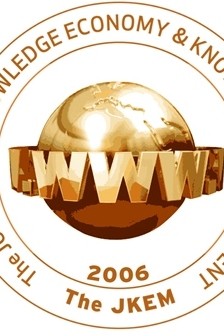THE COMPARISON OF TWO STRATEGIC ALLIANCES IN TERMS OF ORGANIZATIONAL LEARNING AND KNOWLEDGE TRANSFER
Strategic Alliances
THE COMPARISON OF TWO STRATEGIC ALLIANCES IN TERMS OF ORGANIZATIONAL LEARNING AND KNOWLEDGE TRANSFER
___
- Aguilera, Ruth V. (2007). “Translating theoretical logics across borders: organizational characteristics, structural mechanisms and contextual factors in international alliances”, Journal of International Business Studies, Vol.38, pp. 38-46.
- Bignoux, Stephane. (2006). “Short-term strategic alliances: A social exchange perspective”, Management Decision, Vol.44(5), pp. 615-627.
- Czinkota, M., Ronkainen I., Moffett, M., Marinova, S. and Marinov M. (2009). International Business, John
- Wiley & Sons Publication. Denzin, N. K., and Lincoln, Y. S. (1994). “Introduction: Entering the field of qualitative research”. In N. K.
- Denzin and Y. S. Lincoln (Eds.), Handbook of qualitative research (1st ed.; pp. 1–17). Thousand Oaks, CA: Sage. Dyer, Jeffrey H., Kale, Prashant and Singh, Harbir. (2001) “How to make strategic alliances work”, MIT Sloan
- Management Review, Vol.42. pp. 37-43. Genç, Nurullah and Öykü İyigün. (2011). “The role of organizational learning and knowledge transfer in building strategic alliances: A case study”, Procedia Social and Behavioral Sciences, Vol.24(2011), pp. 1124
- Grant, Robert M., Baden-Fuller, Charles. (2004). “A knowledge accessing theory of strategic alliances”, Journal of Management Studies, Vol.41:1. pp. 61-84.
- Gulati, R. (1998). “Alliances and networks”, Strategic Management Journal, Vol.19, pp. 293-317.
- Hall, Wendy. (1995). Managing Cultures Making Strategic Relationships Work. John Wiley & Sons Publication.
- Hamel, Gary. (1991). “Competition for competence and inter-partner learning within international strategic alliances”, Strategic Management Journal, Vol.12, pp. 83-103.
- Huber, George P. (1991). “Organizational learning: the contributing processes and the literatures”, Organization Science, Vol.2, No.1. pp. 88-115.
- Huff, A. S., Floyd, S.W., Sherman, H. D. and Terjesen S. (2009). Strategic Management Logic and Action. John
- Wiley & Sons Publication, pp. 348-360. Kale, Prashant., Singh, Harbir, Perlmutter, Howard. (2000). “Learning and protection of proprietary assets in strategic alliances: building relational capital”, Strategic Management Journal, Vol.21. pp. 217-237.
- Khamseh, Hamid Mazloomi and Jolly, Dominique R. (2008). “Knowledge transfer in alliances: determinant factors”, Journal of Knowledge Management, Vol.12, pp.37-50.
- Kogut, B. (1988). “Joint ventures: theoretical and empirical perspectives”, Strategic Management Journal, Vol.9. pp. 319-332.
- Levitt, Barbara and March, James G. (1988). “Organizational learning”, Annual Review of Sociology, Vol.14, pp. 319-340.
- Marchel C. and S. Owens (2007). “Qualitative research in psychology: Could William James get a job?”, History of Psychology, Vol.10, No.4, pp. 301-324.
- Mohr, J. and R. Spekman (1994). “Characteristics of partnership success”, Strategic Management Journal, Vol.15, pp. 135-152.
- Mowery, David C., Oxley, Joanne E. and Silverman Brian S. (1996). “Strategic alliances and interfirm knowledge transfer”, Strategic Management Journal, Vol.17, p. 77-91.
- Oxley, J. E. (1997). “Appropriability hazards and governance in strategic alliances: a transaction cost approach”.
- Journal of Law Economics and Organization, Vol.13. pp. 389–407. Yaprak, Atilla. (2011). “Dynamic learning and strategic alliances: A commentary essay”, Journal of Business Research, Vol.64(2011), pp. 1128-1130.
- Yoshino, Michael Y. and Rangan, Srinivasa U. (1995). Strategic Alliances An Entrepreneurial Approach to
- Globalization. Harvard Business School Press. http://www.saruhan.com.tr/tr/tarihce.php http://egepen.com/
- Yayın Aralığı: Yılda 2 Sayı
- Başlangıç: 2006
- Yayıncı: İbrahim Güran YUMUŞAK
THE COMPARISON OF TWO STRATEGIC ALLIANCES IN TERMS OF ORGANIZATIONAL LEARNING AND KNOWLEDGE TRANSFER
Nurullah Genç – N. Öykü İYİGÜN, Nurullah Genç
Naail Mohammed KAMİL, Mohamed SULAİMAN, Aahad M. OSMAN, - GANİ, Khaliq AHMAD
Hamza Ateş– Bora Yıldız– Harun YILDIZ, Hamza Ateş, Bora Yıldız, Harun Yıldız
GÜNEY KORE’NİN İNOVASYON AKTÖRLERİ: ÜNİVERSİTE, SANAYİ VE KAMU ARAŞTIRMA MERKEZLERİNİN ANALİZİ
A. Kadir Bin Othman – M. Khirzan Badzli RAHMAN, Abdul Kadir bin Othman, Ariff Md Abdul MALİK, Mohd Khirzan Badzli Abdul Rahman, Samsudin WAHAB
Peter KUCHİNKE, - UN, Yeong PARK
THE ROLE OF ACCULTURIZATION FOR CROSS-CULTURAL HUMAN RESOURCE DEVELOPMENT
Vilmante Kumpikaite – Kestutis DUOBA, Kestutis Duoba
Derya Ergün Özler – Nuray Mercan – Yaşar ALTINAY, Derya Ergün Özler, Nuray Mercan, Yaşar Aksanyar, Ayşenur Altınay
